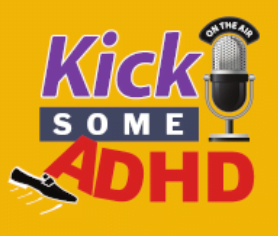 Are you eating properly? If you aren’t you could be sabotaging your Adult Attention Deficit treatments. Eating the best ADHD diet is crucial to managing ADHD.
Are you eating properly? If you aren’t you could be sabotaging your Adult Attention Deficit treatments. Eating the best ADHD diet is crucial to managing ADHD.
What you eat determines how well your brain functions. Yet many adults with ADHD have horrid diets and eating habits.
We forget to eat. We skip meals. We forget to grocery shop. When hunger catches up with us, we end up eating whatever we can get our hands-on. We binge on junk food in an unconscious effort to self-medicate.
All this plays havoc on the ADHD brain.
ADHD guru Dr. Ned Hallowell says, “If you don’t eat properly, you can become distracted, impulsive and restless. You can look like you have ADHD even if you don’t!”
Some of my coaching clients even report that eating a more ADHD-friendly diet lets them take less ADHD medication.
Let’s unwrap the mysteries of food and ADHD so you can eat a diet that supports your brain.
The Best ADHD Diet
Your goal is to give your brain a constant supply of protein and at the same time reduce artificial ingredients. You need:
- Protein with every meal. Found in meat, eggs, cheese, yogurt, cottage cheese, nuts, soy, and beans; some proteins are high in fat so keep your portions small. Nuts (almonds, walnuts, cashews, etc.), cheese and beef jerky are all easy protein-rich snacks.
- Fruits and vegetables. Since ADHD adults avoid anything too challenging, select fruits and vegetables that are easy to prepare and eat. I find pre-washed and cut bags of lettuce and carrots are worth the extra expense!
- Whole grains (complex carbohydrates). Think whole wheat: flours, crackers, cereals, and pasta. Brown rice, too. The words ‘whole wheat’ must be on the package’s ingredients list for the product to truly be whole wheat.
- A complete vitamin and mineral supplement. Even if you do manage to eat a good diet, numerous studies show our bodies and brains need more vitamins and minerals than we get from our food.
- Omega 3 Fatty Acids. Found in supplements, cold-water white fish such as tuna, salmon, and sardines. Also in flax seeds, chia seeds, walnuts, Brazil nuts, olive, and canola oil.
- Healthy Fats. The ADHD brain needs healthy fat. Think plant-based fats like avocado, coconut oil, and olive oil.
These Bad Guys Can Mess With Your Focus
- Foods with long ingredient names you can’t pronounce. Some studies show artificial colors, sugar substitutes, and food additives can aggravate ADHD symptoms. The results are inconclusive, but why take a chance?
- Sugar, corn syrup, honey, and candy. I’m not going to say NEVER have sugar, but with sugar hidden in many foods, most people eat way too much so avoid it when you can. Especially watch out for high-fructose corn syrup; it’s sugar with a high punch.
- Foods containing trans-fatty acids. Listed among the ingredients as “partially hydrogenated oils”, trans-fats are dietary bad-guys that play havoc with your cholesterol. Read the label. Some foods say, ‘0 grams of trans fats’ but still list it in the ingredients.
- Watch your alcohol and caffeine intake. Some say to cut them out entirely. I’m a fan of moderation, though. I suggest you notice how your brain and body react. I’ve found too much caffeine makes me jumpy and too much wine makes my brain fuzzy for a couple of days.
- Foods containing white flour. White bread, white pasta, and grains (white rice). ADHD can make you crave bread and other carbohydrates; it’s a form of self-medication. There are better ADHD treatments than diving headfirst into a bread basket!
Do you want your brain to work well? Then it’s up to you to give it the fuel it needs to operate at top performance. That means you need to eat healthy foods – an ADHD-friendly diet that supports your brain.
My Diet Switch Story
Many years ago when Scoop, our beloved, old dog, developed food allergies, I started buying his food at our local health food co-op. (We did something right. Scoop lived a long happy and healthy 17 years!)
It didn’t take long to see the silliness in buying healthy, organic food for the dog while feeding the household human foods packed with chemicals and sugars.
Along with eating healthier, I’ve found shopping at a small health food market is very ADHD-friendly. Well worth the few extra dollars we spend on food each week.
At our co-op, a committee reads the labels to make sure all the foods they sell are healthy before being allowed on the shelves! I’m automatically avoiding artificial colors, food additives, sugars, trans-fats, and most simple carbohydrates without having to spend time thinking about it!
Since the Co-op is smaller than regular grocery stores, I’m not overwhelmed by crowds and choices. Also, shopping is more fun since I often run into people I know.
Plus, they have a great selection of good vitamins and supplements so I don’t have to remember to go to another store to stock up on those important, ADHD-treating, Omega-3s.
Not everyone is fortunate to have a great health food store minutes from their house, but perhaps you have a close equivalent. It’s worth checking out. It’s another step to making it easier to eat the best ADHD diet so your brain works better.
Keep learning with:

 Tired of struggling with ADHD? You’re in the right place. ADHD Success is loaded with free, practical tips to help you get organized, manage your time, and live more easily with Adult ADHD. Like what you read? Sign up for the newsletter now! No Spam. I promise!
Tired of struggling with ADHD? You’re in the right place. ADHD Success is loaded with free, practical tips to help you get organized, manage your time, and live more easily with Adult ADHD. Like what you read? Sign up for the newsletter now! No Spam. I promise!
0 Comments